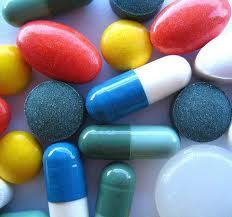Gabapentin Powder
1800.00 - 2000.00 INR/Kilograms
Product Details:
- Storage Room Temperature
- EINECS No 262-076-3
- Loss on Drying Loss on Drying (at 105oC till constant weight): Not more than 8%w/w.
- HS Code 29420090
- Solubility Water Soluble
- Smell No Smell
- Melting Point 162
- Click to View more
X
Gabapentin Powder Price And Quantity
- 1800.00 - 2000.00 INR/Kilograms
- 25 Kilograms
Gabapentin Powder Product Specifications
- Medicine Grade
- 90
- Odorless
- C9H17NO2
- C9H17NO2
- 60142-96-3
- 99%
- 314.4 at 760 mmHg
- 1-(Aminomethyl)cyclohexaneacetic acid;Neurontin;Serada;Vultin;
- Pharmaceutical Intermediates
- Loss on Drying (at 105oC till constant weight): Not more than 8%w/w.
- Room Temperature
- 262-076-3
- Powder
- 29420090
- Water Soluble
- No Smell
- white to off-white crystalline powder
- Gabapentin is used with other medications to prevent and control seizures. It is also used to relieve nerve pain following shingles (a painful rash due to herpes zoster infection) in adults. Gabapentin is known as an anticonvulsant or antiepileptic drug.
- 162
- pH 7 and lower
- less than 20 PPM
- 171.24 Milligram (mg)
Gabapentin Powder Trade Information
- Indian Export port
- Letter of Credit (L/C) Delivery Point (DP) Cash Against Delivery (CAD) Letter of Credit at Sight (Sight L/C) Cash Advance (CA) Cash in Advance (CID)
- 100 Kilograms Per Day
- 7 Days
- Yes
- Free samples are available
- DRUM PACK
- Western Europe Australia Eastern Europe Middle East Central America South America Asia North America Africa
- All India
- GMP / ISO
Product Description
Gabapentin Properties:
- CAS Number: 60142-96-3
- Formula: C9H17NO2
- Molecular Weight: 171.24
- Synonyms: 1-(Aminomethyl)cyclohexaneacetic acid;Neurontin;Serada;Vultin;
- EINECS: 262-076-3
- Density: 1.058 g/cm3
- Melting Point: 162
- Boiling Point: 314.4 at 760 mmHg
- Flash Point: 144
- Appearance: White to off-white crystalline powder
- Risk Codes: 61-36/37/38
- Safety: 53-26-36/37/39-45-36
We are famous amongst our customers as a trustworthy organization engaged in offering Gabapentin. It is clear colorless to light yellow liquid compound for pharmaceutical and chemical synthesis. Gabapentin was first introduced as an epilepsy drug (AED) in 1994. The anticonvulsant is well tolerated and well absorbed after oral administration, with a maximal plasma concentration after two to three hours. We processed this chemical under the guidance of expert supervisors using best quality compounds. It is widely used for parenteral nutrition in individuals requiring supplemental nutrition. With melting point -40 and boiling point 243, this product is insoluble in water. It is used in foods, drugs and cosmetics and is essentially non-toxic. We offer this compound at pocket friendly prices to clients.
How does it work?
Gibapentin appears to affect brain electrical activity and the activity of chemicals called neurotransmitters, which transmit messages among nerve cells. Gabapentin is available under several brand names, including Horizant, Gralise, and Neurontin. Capsules, tablets, and liquid versions of the medication are available.
Applications Or where it is used:
Gabapentin is used as part of a combination therapy to treat seizures. Adults who have had shingles (a painful rash caused by herpes zoster infection) can also take this medication to relieve nerve pain. Drugs such as gabapentin act as anticonvulsants or antiepileptics.
How to use?
Gabapentin capsules and tablets should be swallowed whole with water or juice. Be careful not to chew them. It is best to take gabapentin the same way each day, with or without food. Space out your daily doses evenly.
Dosage of usage:
- Adult dosage (ages 1864 years): Typical starting dosage: 900 mg per day (300 mg, thrice per day). Your doctor may increase your daily dose to 2,4003,600 mg.
- Child dosage (ages 1217 years): Typical starting dosage: 300 mg, thrice every day, spaced evenly throughout the day. This can increase to 2,4003,600 mg per day.
- Child dosage (ages 311 years): Typical starting dosage: 1015 mg/kg/day, divided into three doses. Doctors may increase the dosage when necessary to meet the needs of your child.
- Child dosage (ages 02 years): There is no established dosage for children under 3 years of age.
As you age, your kidney function may decrease. This drug may take a longer time to leave your body. To prevent your body from accumulating too much of this drug, your doctor may start you on a low dose. A drug taken in excess can be harmful for your body. Depending on your kidney health, your doctor may adjust your dose.
Side effects:
The most common side effects of gabapentin were dizziness, sleepiness, and water retention (swelled hands, arms, legs, and feet).
Tell us about your requirement

Lithium Carbonate
Quantity
Select Unit
- 100
- 200
- 350
- 550
- 800
- 1100
Additional detail
+91
Email










 : nilesh.sheth70
: nilesh.sheth70

